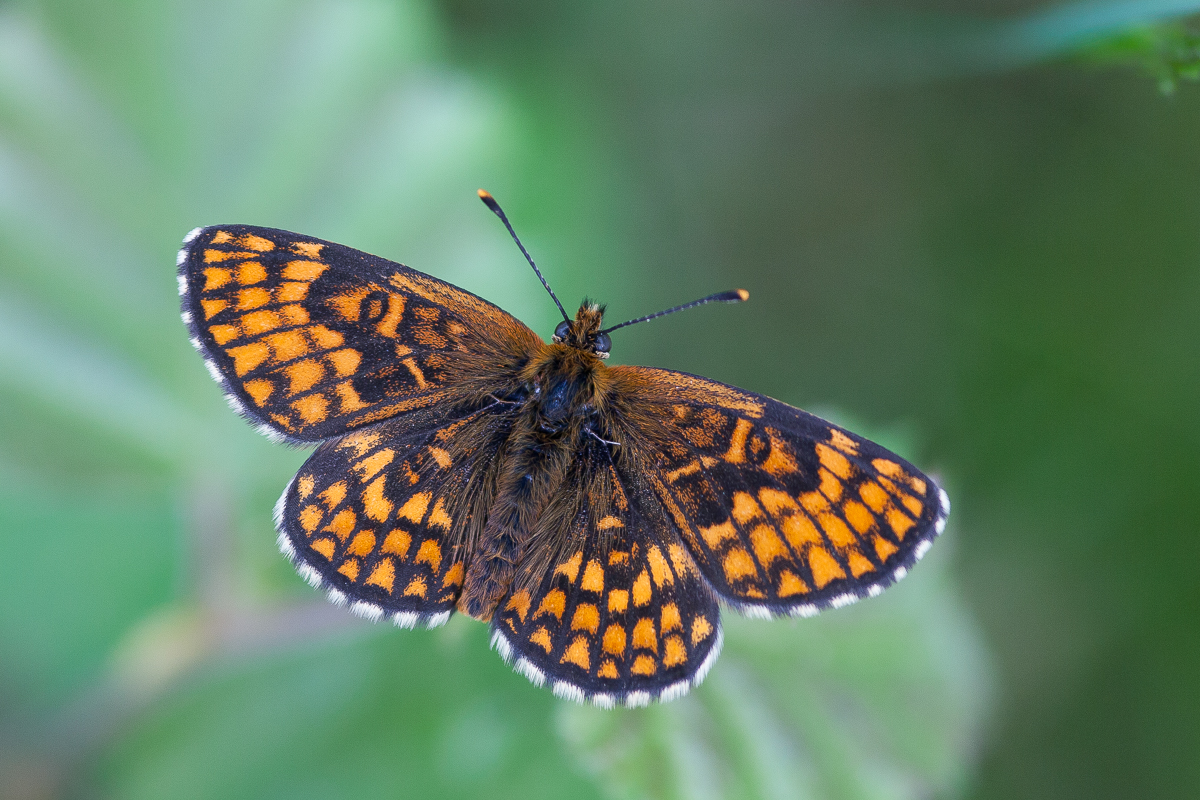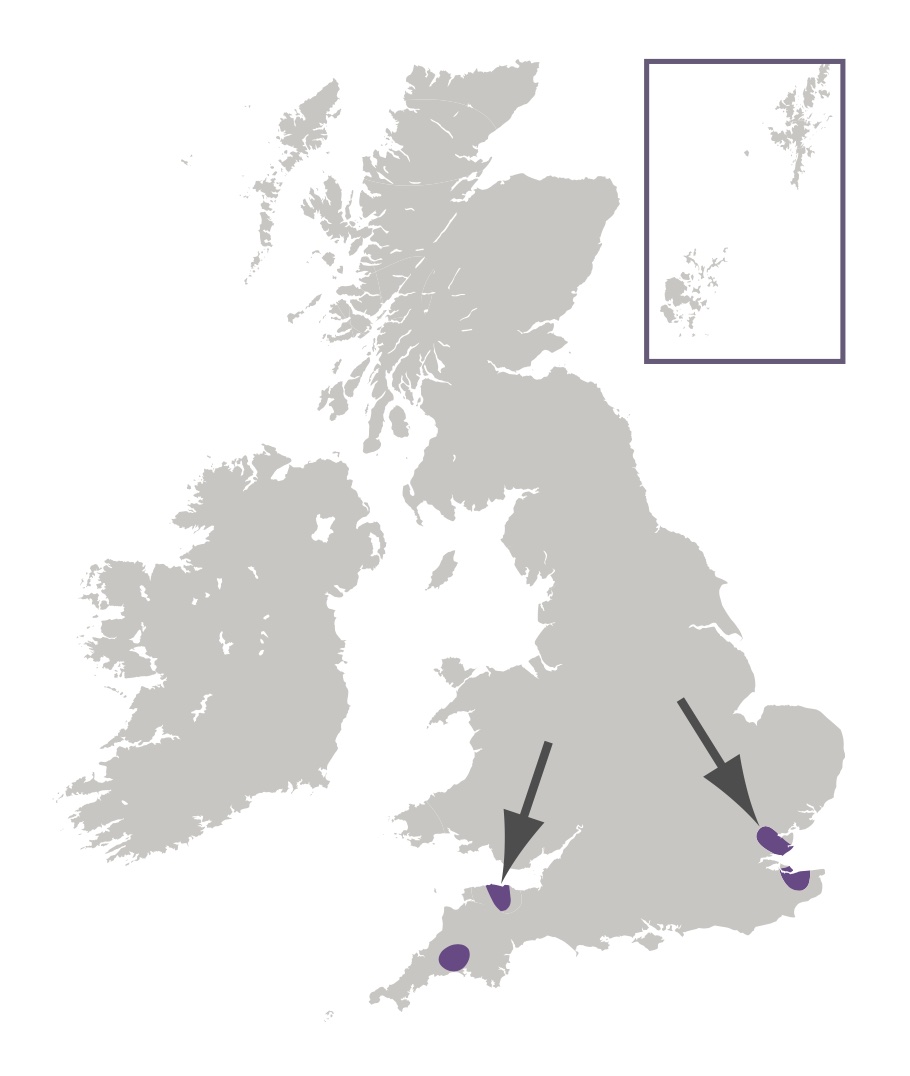
Photo © Peter Eeles
The Heath Fritillary is one of our rarest butterflies and was considered to be on the brink of extinction in the late 1970s. Strange as it may sound, the extinction of the Large Blue in 1979 was to work in favour of this species, since the shock felt by many entomologists resulted in a renewed effort to conserve the Heath Fritillary. This required detailed knowledge of this butterfly's requirements and, as a result of research conducted by Martin Warren, appropriate habitat management plans were put into effect that saved this butterfly from extinction.
This butterfly is confined to a small number of sites in Somerset, Devon and Cornwall in south-west England, and in Kent in south-east England, where it has also been reintroduced into sites in Essex. It is absent from Wales, Scotland, Ireland, the Isle of Man and the Channel Islands. Although very local in its distribution, this butterfly can be seen in large numbers at some sites in good years. This butterfly is widespread on the continent and can be one of the commonest butterflies seen in some regions. This butterfly forms discrete colonies and rarely strays from the main breeding grounds.
This butterfly is very variable in terms of both the colour and the pattern of the wings. The male is the more conspicuous of the two sexes as it patrols clearings in search of a mate. They can be seen flying close to the ground alternating a few flicks of their wings with a short glide. The female has a much more laboured flight, weighed down by her load of eggs. Having found a suitable area, she will crawl around the vegetation before laying an untidy batch of up to 150 eggs. These are typically laid close to the foodplant on the underside of a Bramble leaf, or on a dead leaf. Both sexes can often be found in the company of others as they bask on shrubs.

Colonies in south west England are found on heathland, as well as on rich grassland. Those in south east England are found in woodland. Whatever the habitat, this species requires areas that are relatively-warm. This could be a patch of heathland that has recently been burned or a newly-coppiced clearing in a wood. The butterfly will readily colonise such areas, which resulted in it being given the name of "woodman's follower" as it colonises new clearings that have been created in a wood.
Woodland colonies tend to use Common Cow-wheat and Foxglove as the larval foodplant, whereas those on other sites tend to use Ribwort Plantain and Germander Speedwell.
Adults feed primarily on brambles (Rubus spp.). Bugle (Ajuga reptans), buttercups (Ranunculus spp.), heathers (Calluna and Erica spp.), knapweeds (Centaurea spp.) and Tormentil (Potentilla erecta) are also used.
The primary larval foodplants are Common Cow-wheat (Melampyrum pratense) and Ribwort Plantain (Plantago lanceolata). Foxglove (Digitalis purpurea) and Germander Speedwell (Veronica chamaedrys) are also used.
